IRON MAIDEN
Iron Maiden are an English heavy metal band from Leyton in east London, formed in 1975 by bassist and primary songwriter Steve Harris. Since their inception, the band's discography has grown to include a total of thirty-eight albums: fifteen studio albums; ten live albums; four EPs; and seven compilations.
Pioneers of the New Wave of British Heavy Metal, Iron Maiden achieved success during the early 1980s. After several line-up changes, the band went on to release a series of U.S. and UK platinum and gold albums, including 1982's The Number of the Beast, 1983's Piece of Mind, 1984's Powerslave, 1985's live release Live After Death, 1986's Somewhere in Time and 1988's Seventh Son of a Seventh Son. Since the return of lead vocalist Bruce Dickinson and guitarist Adrian Smith in 1999, the band have undergone a resurgence in popularity, with their latest studio offering, The Final Frontier, peaking at No. 1 in 28 different countries and receiving widespread critical acclaim.
Considered one of the most successful heavy metal bands in history, Iron Maiden have reportedly sold over 85 million records worldwide with little radio or television support. The band won the Ivor Novello Award for international achievement in 2002, and were also inducted into the Hollywood RockWalk in Sunset Boulevard, Los Angeles, California during their United States tour in 2005. As of August 2011, the band have played almost 2000 live shows throughout their career.
For the past 30 years, the band have been supported by their famous mascot, "Eddie", who has appeared on almost all of their album and single covers, as well as in their live shows.
Returning from their time off, the band adopted a different style for their 1986 studio album, entitled Somewhere in Time, featuring, for the first time in the band's history, synthesised bass and guitars to add textures and layers to the sound. The release charted well across the world, particularly with the single "Wasted Years," but notably included no writing credits from lead singer Bruce Dickinson, whose material was rejected by the rest of the band.
During the following tour, the band headlined the Monsters of Rock festival at Donington Park for the first time on 20 August 1988, playing to the largest crowd in the festival's history (107,000). Also included on the bill were Kiss, David Lee Roth, Megadeth, Guns N' Roses and Helloween. The festival was marred, however, by the deaths of two fans in a crowd-surge during the aforementioned Guns N' Roses performance; the following year's festival was cancelled as a result. The tour concluded with several headline shows in the UK in November and December 1988, with the concerts at the NEC Arena, Birmingham recorded for a live video, entitled Maiden England.
According to Guitar World Iron Maiden's sound has "influenced generations of newer metal acts, from legends like Metallica to current stars like Avenged Sevenfold," with Metallica drummer Lars Ulrich commenting that he has "always had an incredible amount of respect and admiration for them." Kerry King of Slayer has stated that "they meant so much to me in their early days" and Scott Ian of Anthrax says that "they had a major impact on my life." M. Shadows of Avenged Sevenfold states that Iron Maiden "are by far the best live band in the world and their music is timeless," while Trivium singer Matt Heafy comments that "without Iron Maiden, Trivium surely wouldn't exist." Slipknot frontman Corey Taylor says that "Steve Harris does more with four fingers than I've ever seen anybody do. And Bruce Dickinson? Dude! To me, he was the quintessential old-school heavy metal singer. He could hit notes that were just sick, and he was a great showman. Everything made me a fan. And there wasn't a dude that I hung out with that wasn't trying to draw Eddie on their schoolbooks," while their music also helped Jesper Strömblad of In Flames to pioneer the melodic death metal genre, stating that he had wanted to combine death metal with Iron Maiden's melodic guitar sounds.
In 1982, the band released one of their most popular, controversial and acclaimed albums, The Number of the Beast. The artwork and title track led to Christian groups in the United States branding the band as Satanists, encouraging people to destroy copies of the release. The band's manager, Rod Smallwood, later commented that Christians initially burnt the records, but later decided to destroy them with hammers through fear of breathing in the melting vinyl's fumes. The claims were not restricted to the United States, however, with the Catholic Church managing to prevent Iron Maiden from performing in Chile in 1992.
Contrary to the accusations, the band have always denied the notion that they are Satanists, with lead vocalist, Bruce Dickinson, doing so on-stage in the Live After Death concert video. Steve Harris has since commented that, "It was mad. They completely got the wrong end of the stick. They obviously hadn't read the lyrics. They just wanted to believe all that rubbish about us being Satanists." Harris has also stated that "The Number of the Beast" was inspired by a nightmare he had after watching Damien: Omen II, and also influenced by Robert Burns' Tam o' Shanter. Furthermore the band's drummer, Nicko McBrain, has been a born again Christian since 1999.
Band members:
Current members:
- Steve Harris – bass, backing vocals (1975–present)
- Dave Murray – lead & rhythm guitars (1976–1977, 1978–present)
- Adrian Smith – lead & rhythm guitars, backing vocals (1980–1990, 1999–present)
- Bruce Dickinson – lead vocals (1981–1993, 1999–present)
- Nicko McBrain – drums, percussion (1982–present)
- Janick Gers – lead & rhythm guitars (1990–present)
Live members:
- Michael Kenney – keyboards, synthesiser (1988–present)
Former members:
- Paul Day – lead vocals (1975–1976)
- Ron "Rebel" Matthews – drums (1975–1977)
- Terry Rance – guitars (1975–1976)
- Dave Sullivan – guitars (1975–1976)
- Dennis Wilcock – lead vocals (1976–1978)
- Bob Sawyer – guitars (1977)
- Terry Wapram – guitars (1977–1978)
- Tony Moore – keyboards (1977)
- Thunderstick – drums, percussion (1977)
- Doug Sampson – drums, percussion (1977–1979)
- Paul Di'Anno – lead vocals (1978–1981)
- Paul Cairns – guitars (1979)
- Paul Todd – guitars (1979)
- Tony Parsons -guitars (1979)
- Dennis Stratton – guitars, backing vocals (1979–1980)
- Clive Burr – drums, percussion (1979–1982)
- Blaze Bayley – lead vocals (1994–1999)
Discography:
IRON MAIDEN
(1980)
Iron Maiden, released on 14 April 1980, is the debut album by the British heavy metal band Iron Maiden. It was released by EMI in the UK, reaching number 4 in the UK charts, and a few months later in the U.S., originally on Harvest/Capitol Records and subsequently Sanctuary Records/Columbia Records. The U.S. release also included the song "Sanctuary", only released in the UK as a single. In 1998, along with the rest of the band's pre-X Factor releases, Iron Maiden was remastered with "Sanctuary" added in all territories.
Although Iron Maiden have since criticised the quality of the album's production, the release was met with critical and commercial acclaim, debuting at No. 4 in the UK Albums Chart as well as achieving prominence for the band in mainland Europe.
When first issued in 1980, the album received immediate critical acclaim, with Geoff Barton, reviewing the album in Sounds, writing, "Heavy metal for the '80s, its blinding speed and rampant ferocity making most plastic heavy rock tracks from the '60s and '70s sound sloth-like and funeral-dirgey by comparison."
Since its release, Iron Maiden has continued to receive praise from reviewers, with Allmusic describing it as "a landmark" as well as "no better place to hear how both punk and prog rock informed the New Wave of British Heavy Metal." In addition, Sputnikmusic describes it as "one of the top debut albums in the world of heavy metal," containing "the raw, aggressive power [which] defines the early years of the band."
Iron Maiden is one of two Iron Maiden albums listed in 1001 Albums You Must Hear Before You Die (The Number of the Beast is the other).
KILLERS
(1981)
Killers is the second album by British heavy metal band Iron Maiden, released on 2 February 1981 in the UK, and 6 June 1981 in the U.S. The album was their first with guitarist Adrian Smith and their last with vocalist Paul Di'Anno, who was sacked after problems with his stage performance arose due to his alcohol and cocaine use. This was also the first Iron Maiden album made with veteran producer Martin Birch, who went on to produce their next eight albums before retiring after Fear of the Dark in 1992.
The song "Wrathchild" is the only regularly played track from the album, appearing in almost all their concert tours. The song was covered in 2005 by female tribute band "The Iron Maidens" on their 2007 album Route 666 and again in 2008 by Gallows on the tribute CD Maiden Heaven: A Tribute to Iron Maiden released by Kerrang! magazine. "Wrathchild" was also featured in the PlayStation 2 game Guitar Hero Encore: Rocks the 80s.
Killers is the only Iron Maiden album to feature two instrumentals and was written almost exclusively by Steve Harris, with only minor assistance from the rest of the band (the title track and "Twilight Zone" being the only other songs to receive additional writing credits). Each song, with the exception of "Murders in the Rue Morgue," based on the story of the same name by Edgar Allan Poe, and "Prodigal Son," had been written in the years prior to the recording of their debut album, although none were recorded professionally until the Killers sessions, apart from "Wrathchild" (an early version of which featured on the Metal for Muthas compilation).
The U.S. edition, which came out a few months after it did in the UK, was initially released on Harvest Records/Capitol Records and subsequently on Sanctuary Records/Columbia Records. "Twilight Zone" was also added to the album.
The Killer World Tour was the tour in support of the album and would feature the band's earliest shows in the US, the first being at The Aladdin Casino, Las Vegas in support of Judas Priest.
THE NUMBER OF THE BEAST
(1982)
The Number of the Beast is the third studio album by the British heavy metal band Iron Maiden, released in March 1982. The album saw the debut of vocalist Bruce Dickinson, and the final appearance of drummer Clive Burr in the band.
The Number of the Beast met with considerable critical and commercial success and was a landmark release for the band, becoming their first album to reach No. 1 in the UK singles chart, and be certified platinum in the US. The album also produced the singles "Run to the Hills" and "The Number of the Beast", the former of which was the band's first top-10 UK single. The album was also controversial – particularly in the US – due to the religious nature of its lyrics and its artwork.
Since the release of The Number of the Beast and its subsequent tour, The Beast on the Road, "The Beast" has become an alternate name for Iron Maiden, and was later used in the titles of some of their compilations and live releases, including Best of the Beast and Visions of the Beast.
Like all of Iron Maiden's album artwork during the 1980s and early 90s, it was painted by Derek Riggs. The cover was originally created for the song "Purgatory", but Rod Smallwood deemed it of too high a calibre for a single release and decided to save it for The Number of the Beast album instead. The original 1982 artwork includes a light blue sky in the background; this was a mistake by the printers of the album cover, and was later rectified and became black when the album was remastered for compact disc in 1998.
The album was also the centre of controversy, particularly in America, due to the lyrics of the title track and the cover art depicting Eddie controlling Satan like a puppet, while Satan is also controlling a smaller Eddie. Smallwood explains that the concept was to ask "who's the really evil one here? Who's manipulating who?"
The album's cover art has been parodied several times — by crossover thrash band Stormtroopers of Death for the cover art of their 1999 album Bigger than the Devil, and on a T-shirt by Streetwear brand Diamond Supply Co.
The Number of the Beast was a commercial success, selling 14 million copies worldwide. It was the band's first record to top the UK charts, entering the Top 40 directly at No. 1 on 10 April, maintaining the top position for a further week, and then remaining in the Top 75 for a total of 31 weeks. It entered the Billboard 200 at No. 150 and went on to peak at No. 33. In addition, the album reached the Top 10 in Austria and Sweden, and No. 11 and 13 in Canada and Norway, respectively.
It was awarded platinum by the British Phonographic Industry (BPI), and received a gold certification by the Recording Industry Association of America (RIAA) on 4 October 1983 (eventually going platinum in 1986). Although the album failed to chart in Germany, it was certified gold ten years later, and it received a 3× platinum award in Canada for sales exceeding 300,000 units.
The two singles, "Run to the Hills" and the title track, debuted in the UK single charts at No. 7 and No. 18, respectively. Both songs entered the Irish Singles Chart in the same order, and reached No. 16 and 19.
PIECE OF MIND
(1983)
Piece of Mind is the fourth studio album by British heavy metal band Iron Maiden. It was originally released in 1983 (see 1983 in music) on EMI, and on Capitol in the US; it was reissued later on Sanctuary/Columbia Records. It was the first album to feature drummer Nicko McBrain, who had recently left the Paris-based band Trust and has been Iron Maiden's drummer ever since.
The album ranked 21 on IGN's list of the top 25 metal albums.
In 1983, Kerrang! magazine published a poll of the greatest metal albums of all time, with Piece of Mind ranking number 1, and with The Number of the Beast at number 2.
At the beginning of the sixth track, "Still Life", the band included a hidden message which could only be understood by playing the album backwards. This was a joke and an intended swing back at the critics who had accused Iron Maiden of being Satanic. The backwards-message features Nicko McBrain mimicking Idi Amin (or rather mimicking John Bird mimicking Idi Amin) uttering the following phrase "What ho said the t'ing with the three 'bonce', do not meddle with things you don't understand...", followed by a belch. The phrase itself is taken from the satirical album The Collected Broadcasts of Idi Amin by Bird and Alan Coren. "What ho" and "What ho said the t'ing" are phrases that also crop up regularly on McBrain's "Listen With Nicko!" tracks from The First Ten Years collection.
According to McBrain, "We were sick and tired of being labelled as Devil worshippers and all this bollocks by these fucking morons in the States, so we thought, 'Right, you want to take the piss? We'll show you how to take the bleeding piss, my son!' And one of the boys taped me in the middle of this Idi Amin routine I used to do when I'd had a few drinks. I remember it distinctly ended with the words, 'Don't meddle wid t'ings yo don't understand.' We thought, if people were going to be stupid about this sort of thing, we might as well give them something to be really stupid about, you know?"
POWERSLAVE
(1984)
Powerslave is the fifth studio album by the English heavy metal band Iron Maiden, released on 3 September 1984 on EMI in Europe and its sister label Capitol Records in the US (it was re-released by Sanctuary/Columbia Records in the US in 2002).
It is notable for its Ancient Egyptian theme displayed in the cover artwork, lifted from the title track, which was carried over to the album's supporting tour. The World Slavery Tour began in Warsaw, Poland on 9 August 1984, and is widely regarded as being the band's longest and most arduous to date, as well as leading to the live album Live After Death.
The release also contains a musical re-telling of Samuel Taylor Coleridge's "The Rime of the Ancient Mariner", which uses pieces of the original poem as lyrics and is, furthermore, Iron Maiden's longest song to date (at 13 minutes and 42 seconds in length).
Powerslave is also notable as being the band's first album to feature the same lineup as the previous one, which would remain intact for two further studio releases.
"2 Minutes to Midnight" and "Aces High" were released as singles.
SOMEWHERE IN TIME
(1986)
Somewhere in Time is the sixth studio album by British heavy metal band Iron Maiden, released on 29 September 1986 on EMI in Europe and its sister label Capitol Records in the US (it was re-released by Sanctuary/Columbia Records in the US in 1998). The studio follow-up to the hugely successful Powerslave/Live After Death pair, it was the first Iron Maiden album to feature guitar synthesizers.
Since its release, it has been certified platinum by the RIAA, having sold over 1,000,000 copies in the US alone.
Somewhere On Tour was the release's supporting tour.
SEVENTH SON OF A SEVENTH SON
(1988)
Seventh Son of a Seventh Son is the seventh studio album by British heavy metal band Iron Maiden, released in 1988 by EMI in Europe and its sister label Capitol Records in the US (it was re-released by Sanctuary/Columbia Records in the US in 2002).
It is the first Iron Maiden release to feature keyboards (played by Michael Kenney) and, along with The Number of the Beast and, later, Fear of the Dark and The Final Frontier, debuted at No. 1 in the UK charts. It also marks the first appearance of many progressive rock elements, particularly seen in the length and odd-time signatures of the title track "Seventh Son of a Seventh Son," and by the fact that it is a concept album.
NO PRAYER FOR THE DYING
(1990)
No Prayer for the Dying is the eighth studio album by the British heavy metal band Iron Maiden. The record marks the band's first line-up change since 1983; guitarist Adrian Smith left the band during the pre-production phase, unhappy with the musical direction it was taking, and only having contributed to one song, "Hooks in You". Smith was replaced by Janick Gers, who had previously worked with singer Bruce Dickinson on his first solo-album, Tattooed Millionaire, and had also worked with Ian Gillan and New Wave of British Heavy Metal band, White Spirit.
No Prayer for the Dying was the first album not to feature a wrap-around cover since 1983's Piece of Mind. It also does not follow the continuity of previous album covers, as Eddie no longer exhibits either his lobotomy or cyborg enhancements.
Two versions of the cover exist. The original 1990 version has Eddie bursting from his grave and grabbing a grave-digger by the neck. As the band's manager, Rod Smallwood, disliked the figure, he asked artist Derek Riggs to remove him from the cover for the 1998 re-release, although the original artwork is used on the disc itself. Additionally an inscription was added to the plaque on the tomb, which Riggs had initially left blank to allow the band to add their own words, and reads "After the Daylight, The Night of Pain, That is not Dead, Which Can Rise Again." The picture disc LP shows Eddie firing a weapon made of four machine guns (a reference to the album's opening track, "Tailgunner"). It has the original cover on side 2.
Reviews for the album were generally poor, with Allmusic commenting that "the songwriting wasn't up to snuff when compared to such classics as Killers or Number of the Beast" and "as a whole doesn't measure up to the hits." Sputnikmusic were equally negative, stating that "No Prayer for the Dying is a plain, listless record that never really gets itself going."
FEAR OF THE DARK
(1992)
Fear of the Dark is the ninth studio album released by British heavy metal band Iron Maiden. Released on 11 May 1992, it was their third studio release to top the UK albums chart and the last to feature Bruce Dickinson as lead vocalist until his return in 1999.
It was the final Iron Maiden album to be produced by Martin Birch, who retired shortly after its release.
Reviews for the album were mixed, with Allmusic commenting that, while "easily an improvement over 1990's lackluster No Prayer for the Dying (both musically and sonically)," the release "still wasn't quite on par with their exceptional work from the '80s." Sputnikmusic were more positive about the release, stating that "though many of the songs are still sub-par by their standards... the band returns to the lofty heights that they enjoyed for the entirety of the 80's." Billboard had a positive reception upon release, saying Dickinson's voice "shows no sign of wear and tear" and the guitar work "sounds fresh and crisp".
In October 2011, Fear of the Dark was ranked number 8 on Guitar World magazine's top ten list of guitar albums of 1992.
Fear of the Dark became the third Iron Maiden album to top the UK Albums Chart. It is the band's most successful record in North America after the inception of Nielsen SoundScan in 1991, with 438,000 copies sold as of 2008.
THE X FACTOR
(1995)
The X Factor is the tenth studio album by Iron Maiden, released in 1995. It is the band's first album to include Blaze Bayley, formerly of Wolfsbane, as vocalist, replacing Bruce Dickinson who left the band following their previous tour to pursue a solo career. It is considered Iron Maiden's darkest album due to the lyrics being based on personal issues surrounding Steve Harris at the time, who was in the midst of a divorce and the death of his father, and the album cover, which depicts the band's mascot, Eddie, being graphically mutilated through surgery.
"Man on the Edge" and "Lord of the Flies" were released as singles. Both of these songs, and "Sign of the Cross," remained in Maiden set lists following Bruce Dickinson's return. Live versions of these songs can be found on the single for "The Wicker Man" and the live albums Death on the Road and Rock in Rio respectively.
"The Edge of Darkness" is based on the 1979 film Apocalypse Now, adapted from Joseph Conrad's Heart of Darkness, "Man on the Edge" is based on the 1993 movie, Falling Down, and "Lord of the Flies" is based on the novel of the same name. "Sign of the Cross" is based on the Umberto Eco's novel The Name of the Rose and is Iron Maiden's second longest song at more than 11 minutes long, the longest being "Rime of the Ancient Mariner" at 13 minutes (from Powerslave). Live versions of "Blood on the World's Hands" and "The Aftermath" can be found in Best of the 'B' Sides compilation album.
Blaze Bayley recorded a re-arranged version of "Sign of the Cross" on the live album As Live As It Gets.
Initially, The X Factor was met with lukewarm responses from critics. Allmusic rated the album two stars out of five, stating that "suffering from a lack of powerful riffs and tightly written songs, The X Factor is a lackluster latter-day album from Iron Maiden. Although the band doesn't sound particularly bad on the record, they don't sound inspired and there's a noticeable lack of energy to the performances which makes the lack of imagination all the more apparent."
Sputnikmusic were somewhat more positive about the release, deeming the album "a change for Iron Maiden, and a very important one at that" as it "paved the way for future albums of similar length." They also praised the "often criticized" Blaze Bayley, whose voice they claimed "was perfect for the new release."
VIRTUAL XI
(1988)
Virtual XI (pronounced: Virtual Eleven) is the eleventh studio album by British heavy metal band Iron Maiden, released on 23 March 1998. It was the second and final Iron Maiden album recorded with vocalist Blaze Bayley.
Virtual XI was met with mixed reviews from critics. Allmusic commented that "on the surface, there's nothing terribly wrong with the record, as it delivers all the crunching riffs and demonic horror of their best records. The problem is that there's nothing memorable about the hooks, riffs, or songs, and there's little visceral energy to the music or production. As a result, it sounds lifeless to all but the most devoted fan." They also stated that Blaze Bayley is "a competent but faceless vocalist."
Sputnikmusic were more positive towards the album, claiming that it "has a few gems, such as Futureal, The Clansman, and Como Estais Amigos", but is "very repetitive, and listening to it takes a lot of patience."
BRAVE NEW WORLD
(2000)
Brave New World is the twelfth studio album by British heavy metal band Iron Maiden, released on 29 May 2000. It was their first studio release since the return of longtime lead singer Bruce Dickinson (who left in 1993) and guitarist Adrian Smith (who left in 1990) in 1999, as well as the band's first studio recording with their current three guitar line-up, as Janick Gers remained with the band.
The album art and title song are references to the novel of the same name, written by Aldous Huxley. The upper half of the artwork was created by Derek Riggs, with the bottom half by digital artist Steve Stone.
The songs "The Wicker Man" and "Out of the Silent Planet" were both released as singles. "The Wicker Man"'s promotional radio release featured extra vocals in the chorus, not present in any other versions of the song.
The Brave New World Tour was the tour in support of the album, during which the show at Rock in Rio was recorded and later released as a live album and video.
Brave New World peaked at No. 7 in the UK Albums Chart, and has since been certified Gold. In the United States, it debuted at No. 39 in Billboard 200, and registered over 307,000 sales on the Nielsen SoundScan system in 2008.
DANCE OF DEATH
(2003)
Dance of Death is the thirteenth studio album by British heavy metal band Iron Maiden, released first in Japan on 2 September and then on 8 September 2003 in the rest of the world excluding North America (where it was released a day later). The album was recorded on magnetic (analogue) tape.
Reviews for the album were generally positive with Kerrang! describing it as "stupendous stuff and concrete proof that Maiden are as electrifying and important as they have been in a long time." Sputnikmusic were also positive about the album, giving special mention to "Paschendale", described as "quite easily the ultimate Maiden masterpiece." Although describing the first three songs as "refreshing yet unremarkable", Allmusic describes Dance of Death as "a triumphant return to form for these heavy metal legends."
Although criticising the album for its length and for not "matching the quality" of its predecessor, 2000s Brave New World, PopMatters praises the band for being able to "still easily outclass most of the younger nu-metal bands today."
A MATTER OF LIFE AND DEATH
(2006)
A Matter of Life and Death is the fourteenth studio album by British heavy metal band Iron Maiden. It was released on 25 August 2006 in Italy and Finland, and 28 August worldwide, excluding the United States, Canada and Japan on 5 September 2006. It is the first album in Iron Maiden's career to enter the U.S. Billboard charts in the top 10, achieving significant chart success in many other countries as well.
Whilst not being a concept album, war and religion are recurring themes throughout, as well as in the cover artwork.
The A Matter of Life and Death Tour was the tour in support of the album.
The first single to be released from the album was "The Reincarnation of Benjamin Breeg", released on 14 August 2006. On 10 August, "Different World" was made available for public streaming on the band's website, as was "Brighter than a Thousand Suns" the following day.
"Different World" was the second single, receiving airplay on many rock radio stations. The song also features an animated video, similar to that of "Wildest Dreams".
An update on Iron Maiden's official website stated that "in just the first week the new album has shipped over a million copies worldwide and impacted on the charts pretty well everywhere in the world". The album marked Iron Maiden's first album to place in the top ten in the Billboard 200, reportedly selling 56,000 units in its first week. Debuting at number four, it was the highest-charting rock album ever in India, until their 15th studio album, The Final Frontier, which debuted at number one. The album went gold in Finland in its first week. This gold record became the band's 8th from Finland.
THE FINAL FRONTIER
(2010)
The Final Frontier is the fifteenth studio album by British heavy metal band Iron Maiden, released on 13 August 2010 in Germany, Austria and Finland, 17 August in North America, and 16 August worldwide. At 76 minutes and 35 seconds, it is the band's longest to date and their first since A Matter of Life and Death in 2006 (the longest gap to date between two consecutive Iron Maiden studio releases). Melvyn Grant, a long-time contributor to the band's artwork, created the cover art.
A critical and commercial success, the album received largely favourable reviews from critics and peaked at No. 1 in 28 countries worldwide. This included the United Kingdom, where it became the band's fourth release to top the UK Albums Chart following 1982's The Number of the Beast, 1988's Seventh Son of a Seventh Son and 1992's Fear of the Dark. On top of this, The Final Frontier also charted at No. 4 in the Unites States, marking their highest placement on the Billboard 200, in addition to gaining the band their first Grammy award in the Best Metal Performance category for the song "El Dorado", released as a free download on 8 June 2010.
EMI released the album in most of the world, while in the United States and Canada it was released jointly by Universal Music Enterprises and Sony Music Entertainment - the successor to the Sanctuary Records/Columbia Records joint venture that had previously controlled the Iron Maiden catalogue in North America.
Throughout The Final Frontier World Tour, Bruce Dickinson often requested that fans put the album to No. 1 in the respective country's music charts, which it did in 28 countries worldwide. It is the first Iron Maiden release to debut at No. 1 in the United Kingdom charts since 1992's Fear of the Dark, having sold 44,385 copies in its first week. In addition, The Final Frontier debuted at No. 4 in the Billboard 200 with 63,000 units sold, the highest position the band has ever reached in the United States.
By the end of its first week, over 800,000 copies had been shipped to retailers worldwide. The album's overall chart success arguably makes it the band's most triumphant release to date.
And now all you crazy fans "UP THE IRONS":



_cover.jpg)
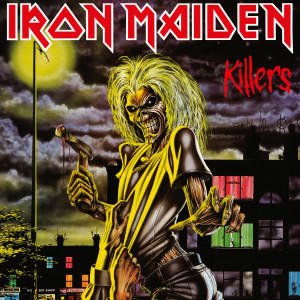

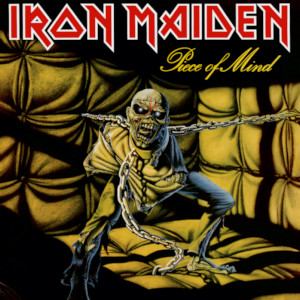

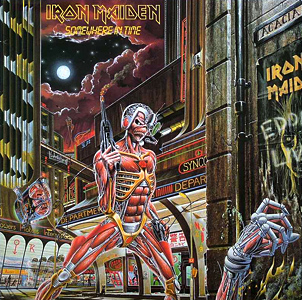
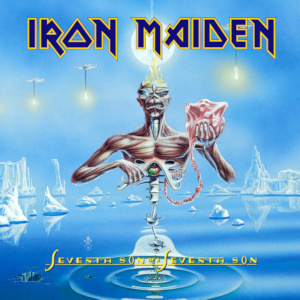





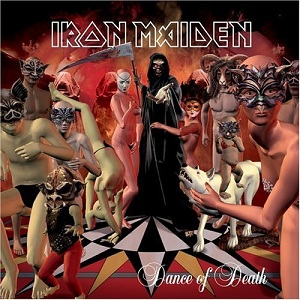

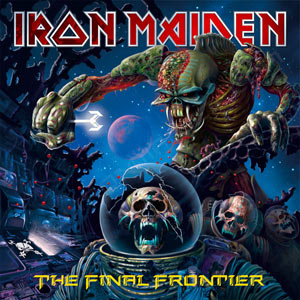
No comments:
Post a Comment